In the annals of English history, few battles have had a more significant impact than Brunanburh, fought in 937.
Yet, despite its significance, this pivotal conflict remains shrouded in mystery, overlooked by many. The clash between King Athelstan‘s Anglo-Saxon forces and Olaf Guthfrithson’s Viking raiders was a defining moment, shaping the course of a nation’s destiny.
As the battle’s reverberations continue to echo through the centuries, a critical question emerges: what drove these two forces to the brink of war, and what were the far-reaching consequences of this brutal conflict?
The Forgotten Battle of Brunanburh
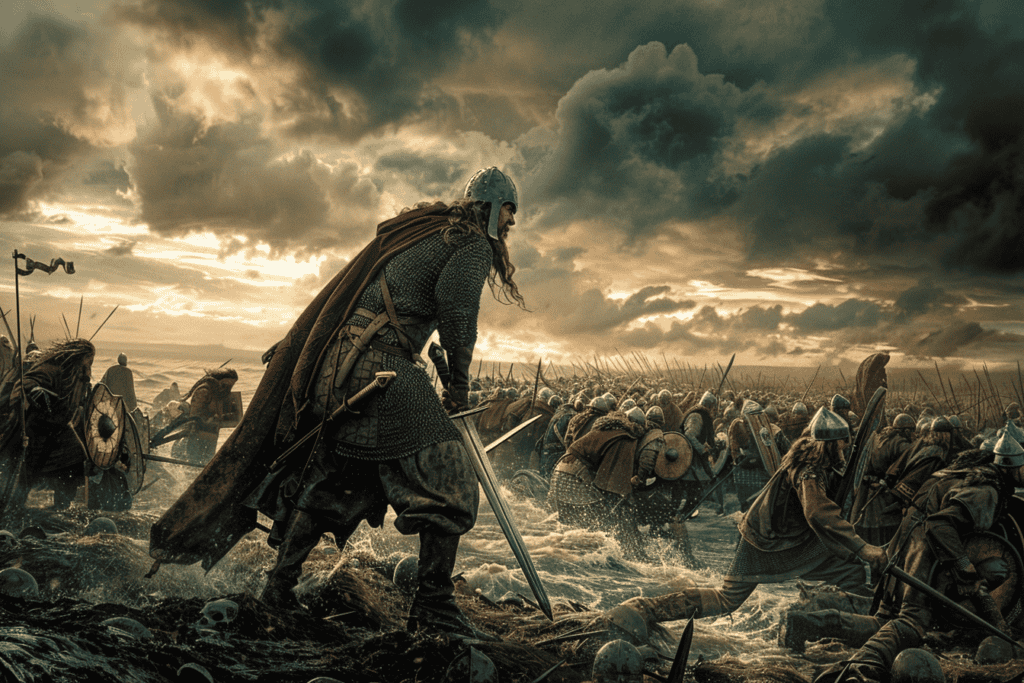
Many historians consider the Battle of Brunanburh, fought in 937, to be one of the most significant and pivotal battles in English history, yet it remains surprisingly obscure to the general public.
This battle marked a decisive turning point in the struggle for England’s sovereignty, as King Athelstan of Wessex led a coalition of Anglo-Saxon forces to victory against the Viking armies of Olaf Guthfrithson, the Norse-Gael king of Dublin. The battle’s outcome halted the Viking expansion into England, securing Wessex’s dominance over the entire island.
Brunanburh’s impact on England’s development can’t be overstated, as it paved the way for a unified English monarchy and shaped the country’s cultural identity.
Despite its importance, the Battle of Brunanburh remains relatively unknown, overshadowed by more famous conflicts like Hastings and Bosworth. However, historians recognize its significance, and it continues to be a subject of intense study and debate.
Viking Raiders and Royal Rivalries
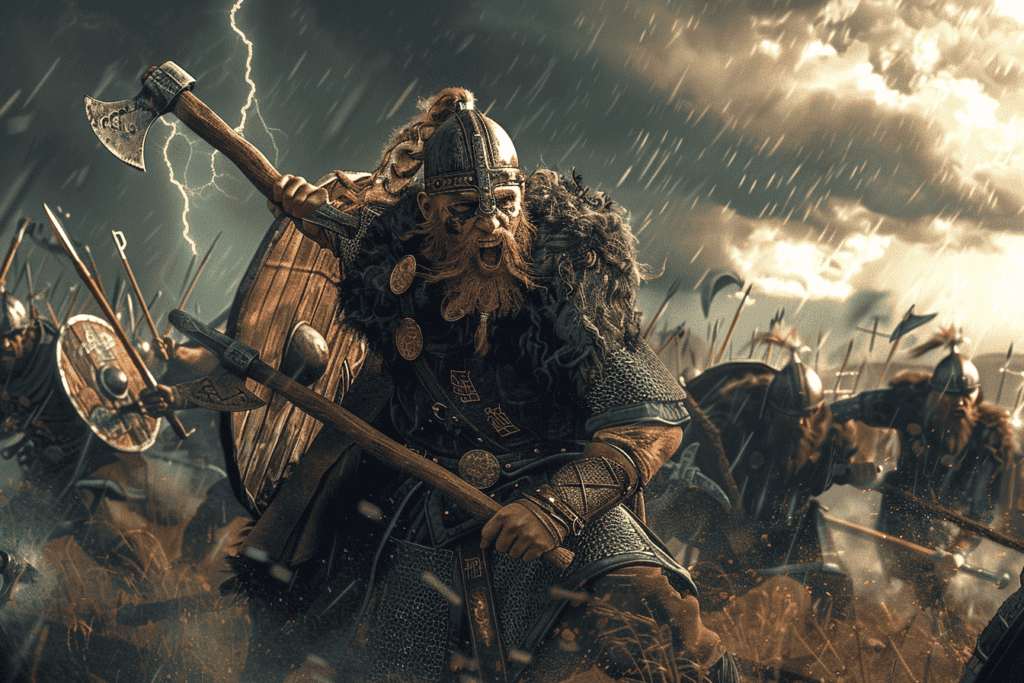
The Viking raiders, led by Olaf Guthfrithson, had been making steady inroads into England, capitalizing on the rivalries between the Anglo-Saxon kingdoms and the instability of the English monarchy. These raiders, primarily from Dublin and Ireland, had established a strong foothold in the north, particularly in the kingdoms of Northumbria and Mercia. By exploiting the internal divisions and power struggles within the Anglo-Saxon kingdoms, the Viking raiders were able to expand their territory and influence.
The English monarchy, still reeling from the recent succession crisis, was struggling to respond effectively to the Viking threat.
The rivalry between the Anglo-Saxon kingdoms, particularly between Wessex and Mercia, further weakened the English defenses. Each kingdom was more focused on its own internal struggles and rivalries than on uniting against the common Viking threat. This created an environment where the Viking raiders could thrive, launching repeated attacks and raids on English towns and monasteries.
The stage was set for a major confrontation, one that would ultimately culminate in the battle of Brunanburh.
The Battle Rages on the Coast
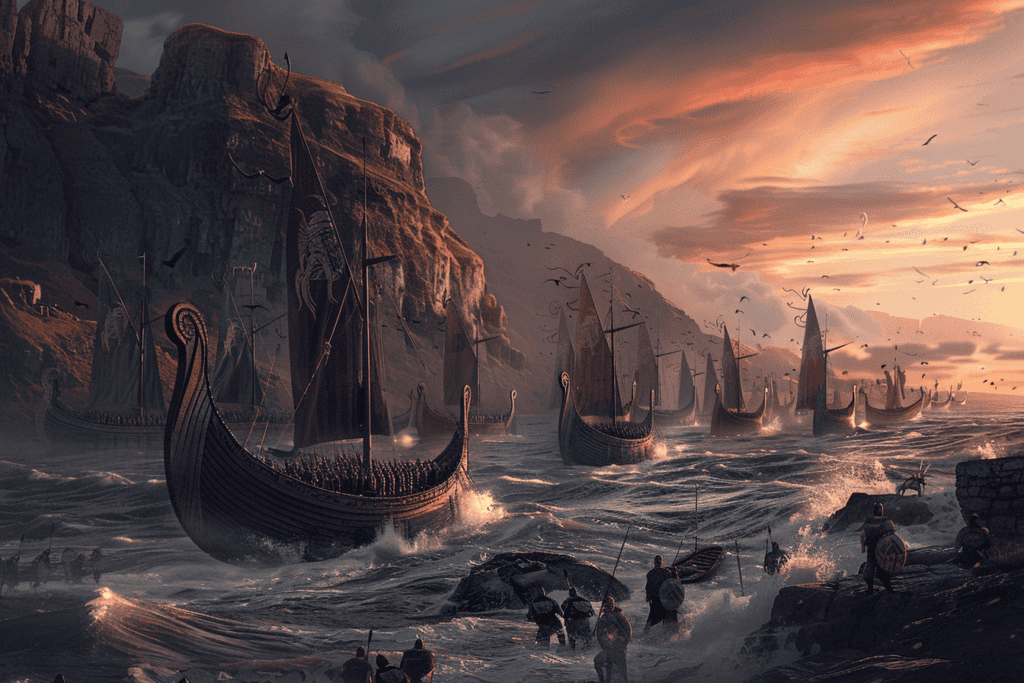
Carnage erupted on the English coast as Olaf Guthfrithson’s Viking war band clashed with the forces of Wessex and Mercia in the fateful battle of Brunanburh. The battle-hardened Vikings, fueled by their desire for plunder and conquest, charged forward with ferocity. The defenders, led by King Æthelstan and his brother Edmund, stood firm, determined to protect their domain from the Norse invaders.
As the battle raged on, the clash of steel on steel echoed through the air, accompanied by the cries of the wounded and the dying. The Viking longships, beached along the coast, provided a secure foothold for Olaf’s forces, while the Anglo-Saxon defenders fought valiantly to repel the invaders.
Despite being outnumbered, the Vikings’ superior battle tactics and training allowed them to hold their ground against the more numerous Anglo-Saxon forces. The outcome of the battle hung precariously in the balance, as the two armies clashed in a frenzy of blood and steel.
Aftermath of a Bloody Victory
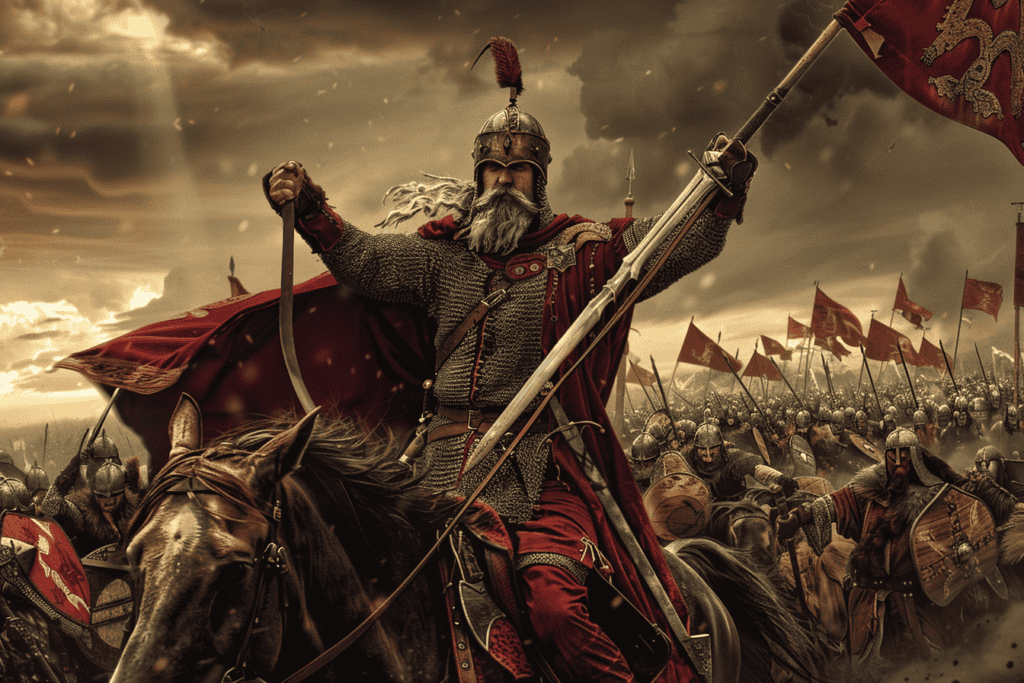
Olaf’s warriors emerged victorious, but at a steep cost, their exhausted bodies bearing the scars of intense combat. The aftermath of the battle was marked by a somber mood, as the survivors tended to the wounded and buried the dead. The Viking chieftain’s army had suffered significant losses, but their triumph had secured a pivotal victory over the rival forces of Constantine and Eugenius. The spoils of war were claimed, and the Vikings seized control of the battlefield, asserting their dominance over the region.
As the victorious warriors rested and regrouped, they took stock of their victory. The battle had been fierce and brutal, with both sides suffering heavy losses. The Viking warriors had fought with ferocity, using their superior mobility and cunning to outmaneuver their foes. Despite their exhaustion, the Vikings remained vigilant, knowing that their victory wasn’t yet secure. They fortified their defenses, preparing for the possibility of a counterattack.
In the days that followed, the Vikings consolidated their gains, solidifying their control over the region and ensuring that their victory would be lasting.
Shaping the Course of History
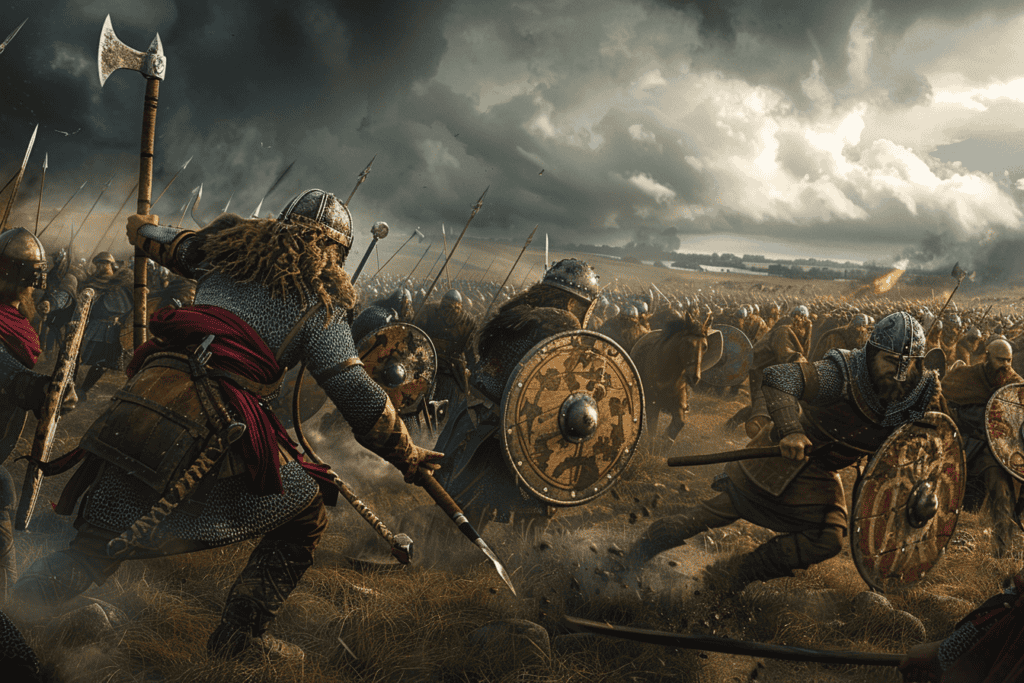
Victory at Brunanburh reshaped the Anglo-Saxon kingdoms, setting in motion a chain of events that would redefine the balance of power in medieval England. The battle marked the beginning of a new era, as the West Saxon kingdom, led by King Æthelstan, emerged as the dominant force in the region. This shift in power led to the gradual unification of England, with the West Saxon kingdom eventually absorbing its neighboring kingdoms.
The aftermath of Brunanburh also saw the kingdom of York, which had previously been a Viking stronghold, come under Anglo-Saxon control. This significant change in power dynamics resulted in a period of relative peace, allowing for economic and cultural growth in the region.
Moreover, the battle’s outcome paved the way for the eventual creation of a unified English monarchy, with King Æthelstan being hailed as the first king of England. The impact of Brunanburh on the course of English history can’t be overstated, as it laid the foundation for the development of a powerful and centralized English state.

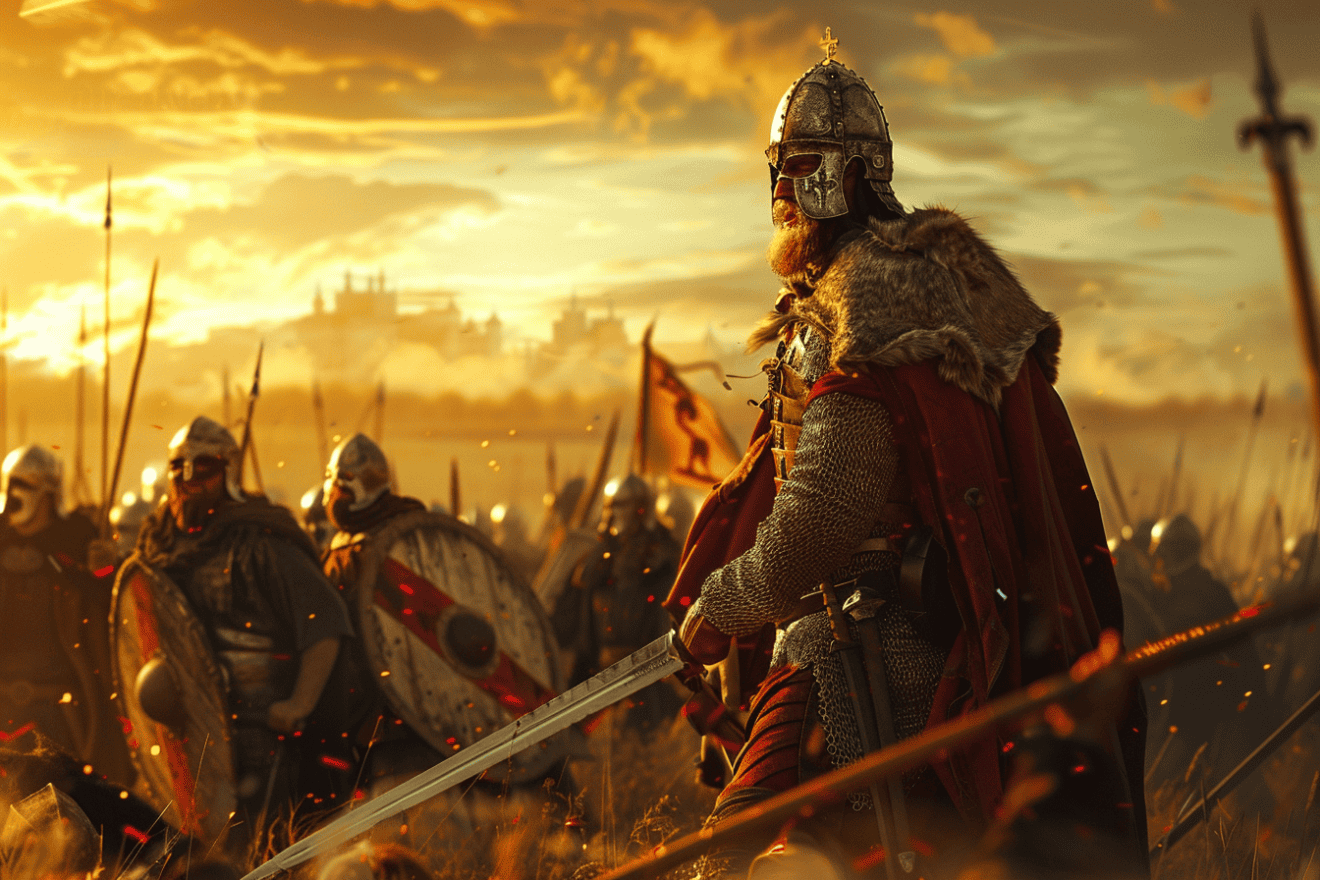








Add Comment